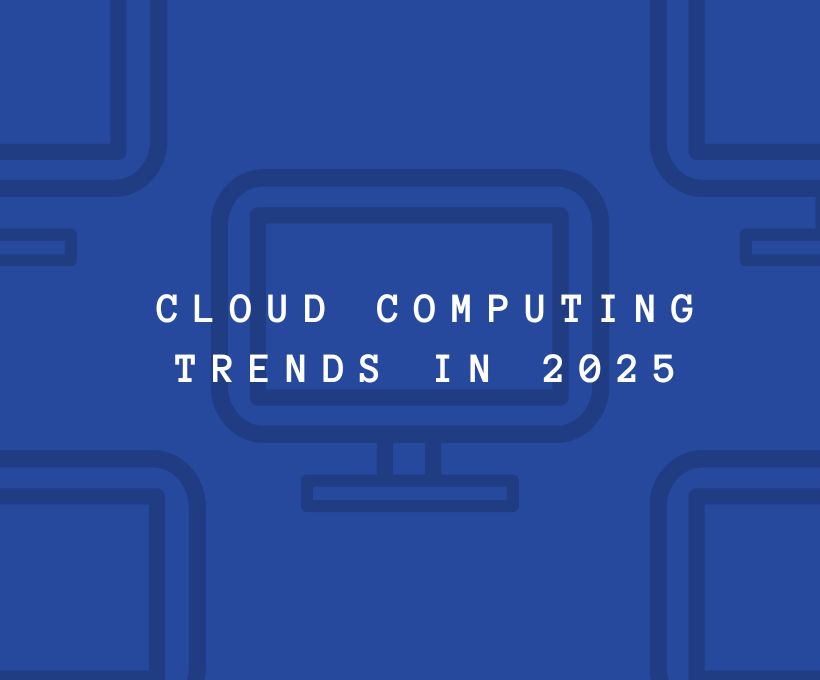Introduction
Cloud computing has become the backbone of modern IT infrastructure, enabling businesses to scale operations, optimize costs, and leverage cutting-edge technologies like artificial intelligence (AI) and big data analytics. As we step into 2025, cloud computing trends continue to evolve, shaping the future of enterprise computing.
This article explores the latest cloud computing trends, their technical implications, real-world applications, and best practices to stay ahead in this rapidly transforming domain.
Key Cloud Computing Trends in 2025
1. Multi-Cloud and Hybrid Cloud Adoption
Organizations are increasingly moving towards multi-cloud and hybrid cloud strategies to avoid vendor lock-in and enhance resilience.
Why It Matters:
- Flexibility: Organizations can choose different cloud providers for specific workloads.
- Redundancy & Resilience: Distributing workloads across multiple cloud environments minimizes downtime.
- Cost Optimization: Businesses can leverage pricing models from different providers to reduce expenses.
Technical Considerations:
- Kubernetes for orchestration: Tools like Kubernetes enable seamless deployment across multiple cloud environments.
- Cloud-Native Security Solutions: Ensuring secure access and compliance across hybrid setups is crucial.
2. AI-Driven Cloud Services
AI-powered cloud services are revolutionizing automation, data analytics, and application optimization.
Use Cases:
- AI-Powered Infrastructure Management: Automated workload scaling and predictive maintenance.
- Smart Data Processing: AI-driven data analytics for real-time insights.
- Conversational AI & Chatbots: Enhanced customer interactions through cloud-based NLP services.
Tools & Frameworks:
- AWS AI & ML Services (Amazon SageMaker, AWS Comprehend)
- Google Cloud AI Platform
- Azure Cognitive Services
3. Serverless Computing & Function-as-a-Service (FaaS)
Serverless architectures eliminate the need for infrastructure management, enabling developers to focus purely on code.
Benefits:
- Cost Efficiency: Pay only for execution time, not idle server time.
- Auto-Scaling: Scales dynamically based on demand.
- Improved Agility: Faster deployment cycles.
Popular Serverless Platforms:
- AWS Lambda
- Google Cloud Functions
- Azure Functions
4. Cloud Security & Zero Trust Architecture
With rising cyber threats, cloud security is a top priority. Organizations are adopting Zero Trust models to enhance security postures.
Security Best Practices:
- Identity & Access Management (IAM): Enforcing strict user authentication.
- Data Encryption: Encrypting data at rest and in transit.
- Compliance Standards: Ensuring adherence to GDPR, HIPAA, and other regulations.
Tools:
- Cloudflare Zero Trust
- AWS Shield & GuardDuty
- Microsoft Defender for Cloud
5. Edge Computing & Decentralized Cloud Models
With the proliferation of IoT and real-time applications, edge computing is reducing latency and bandwidth consumption.
Applications:
- Autonomous Vehicles: Processing sensor data at the edge for real-time decision-making.
- Smart Cities: Localized data processing for traffic management and surveillance.
- Industrial IoT (IIoT): Predictive maintenance in manufacturing.
Edge Computing Platforms:
- AWS IoT Greengrass
- Azure IoT Edge
- Google Distributed Cloud Edge
Challenges & Considerations in Cloud Computing
1. Data Privacy & Compliance
Managing data across multiple cloud providers while ensuring compliance with regulatory standards remains a challenge.
2. Cloud Cost Management
Unoptimized cloud usage can lead to excessive costs. Utilizing tools like AWS Cost Explorer and Azure Cost Management can help optimize spending.
3. Talent Shortage
The demand for skilled cloud professionals outpaces supply. Organizations must invest in upskilling their workforce through certifications like AWS Certified Solutions Architect and Google Cloud Professional Architect.
Best Practices for Cloud Adoption
1. Optimize Cloud Costs
- Use auto-scaling and reserved instances for cost savings.
- Regularly review billing reports to identify unnecessary expenses.
2. Enhance Cloud Security
- Implement multi-factor authentication (MFA) for all cloud accounts.
- Regularly conduct security audits and penetration testing.
3. Invest in Automation & AI
- Utilize AI-driven monitoring tools to optimize cloud performance.
- Automate infrastructure management using Infrastructure as Code (IaC) tools like Terraform.
Conclusion & Next Steps
Cloud computing is rapidly evolving, with trends like AI-driven services, hybrid cloud adoption, and edge computing shaping the industry’s future. Staying updated with these advancements and implementing best practices will help businesses harness the full potential of cloud computing.
What’s Next?
- Explore case studies of multi-cloud strategies.
- Experiment with serverless applications.
- Stay updated with cloud certifications and training programs.
Have questions or insights to share? Drop them in the comments below!
